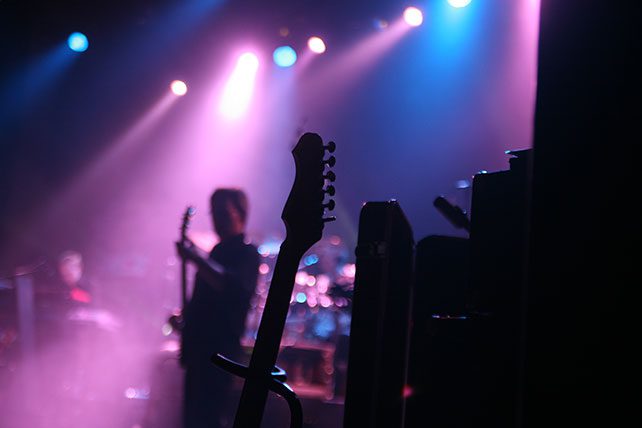Typical analog mixing boards I recommend are right around $1,000 for a new board. Soundcraft, Allen and Heath, Yamaha, some Mackies (in that order of preference) are pretty much bulletproof. An analog board may have some built-in effects and possibly a recording interface (either USB or Firewire), but that’s about the extent of the computer electronics. A lot of these brands (and audio boards) have been around for a long time and have proven their toughness on the road.
Analog mixers are inexpensive, but in light of the dropping costs of digital mixers and the limited functionality of the analogs, unless you have a lot of expensive and somewhat new sound gear components, a digital mixer is likely a better choice.
Sound Gear: Analog vs. Digital Mixers
Here’s the difference between an analog board and a digital board. With an analog board, what you see is what you get. That means that if you want to change a setting, there’s a knob on each channel for it. On a digital board, you have to bring that channel into focus since the function of the knobs on a digital board change depending on what you’ve got on the screen.
A digital board is a computer and is subject to the same issues that a computer has. An analog board has greater latitude in the environment it’s operated in and can tolerate a greater range of temperature, humidity and power variances. A digital board has all the effects, dynamics and individual channel eqs and front of house eqs needed, which means the above gear can be paired down. An analog board doesn’t have the luxury of having all that built in.
Consider the Allen & Heath QU16, Behringer X32, Midas M32 and the Soundcraft SI Expression line. They are a decent chunk of change, but when factoring in the additional capabilities and what you’d be spending for a decent eq and decent compressor, you’re about even. The PreSonus StudioLive mixers have been very popular but don’t have the automated faders like the others.
Da Fat Channel
PreSonus, along with other companies like Soundcraft and Behringer, have digital mixers with a single-channel surface design. PreSonus calls it the Fat Channel design. This is where everything for a given channel is shown all at one time. No layers to wade through. It’s not as intimidating as higher-end digital boards.
It’s important to note that digital mixers do not all have the same workflow. Demo them and find which works best for your situation.
Powered speakers and subs
Why powered speakers for your sound gear components? Because in a relatively short time, they’ve come a long way.
Powered speakers along the lines of QSC’s K or KW series have built-in amplifiers and crossover circuits custom tailored to the specific speakers. Plug in the equivalent sub, hook up the mains and you can rest assured that the subs will crossover at the optimum frequency and that each amplifier is designed to produce the maximum sound for the given speaker. No additional amps or crossover boxes to wire in and fuss over.
Be aware that you’ll need to have power receptacles by the speakers to plug them in and they are heavier than non-powered speakers. While they may seem more expensive, by the time you factor in the cost of the proper amps and crossovers, the powered speakers come out equal.
Powered stage monitors or in-ear system
Monitor speakers are the typical—some say “old-school”—way for musicians to hear themselves on stage.
What musicians need to hear is quite different than what the congregation needs to hear. Most musicians need the lead vocal and lead instrument to focus on what they’re doing. Sometimes they’ll need to bring their instrument into their mix. Vocalists always need to be able to hear themselves.
Among sound gear components, monitor wedges require the sound team to mix each musician’s monitor mix from the sound booth. The problem is with more monitors on stage and multiple monitor needs, stage volume becomes a problem. This is especially true if the drums are right behind any vocalist.
In-ear monitors are pretty much headphones plugged into a box. They take the individual channel sends from the mixing board and allow each musician to create their own mix. By being on headphones, stage volume isn’t a concern.
In-ears take some getting used to because of the amount of audio isolation. To compensate, it’s common to have a microphone on the stage aimed out at the audience and mixed into the musician’s mixes. In-ears are usually more expensive that monitor wedges.
Vocal microphones
Whatever you do, please don’t buy no-name (generic) brand mics. You’ll regret it. While the specs may look similar to pro-grade mics like Shure, Sennheiser, Heil, Audix, Audio-Technica and ElectroVoice, they aren’t close.
There is a reason the Shure SM-series, Sennheiser 835, Heil PR20/30/40, etc. have been around a long time. Someone once said that every single hall in the United States has been EQ’ed for a Shure SM57/58. That alone should tell you something. These mics are rugged, all-around workhorses that are still in use by major productions. Just about every concert that you watch on TV has at least one of these mics on something, whether a vocal or an instrument.

